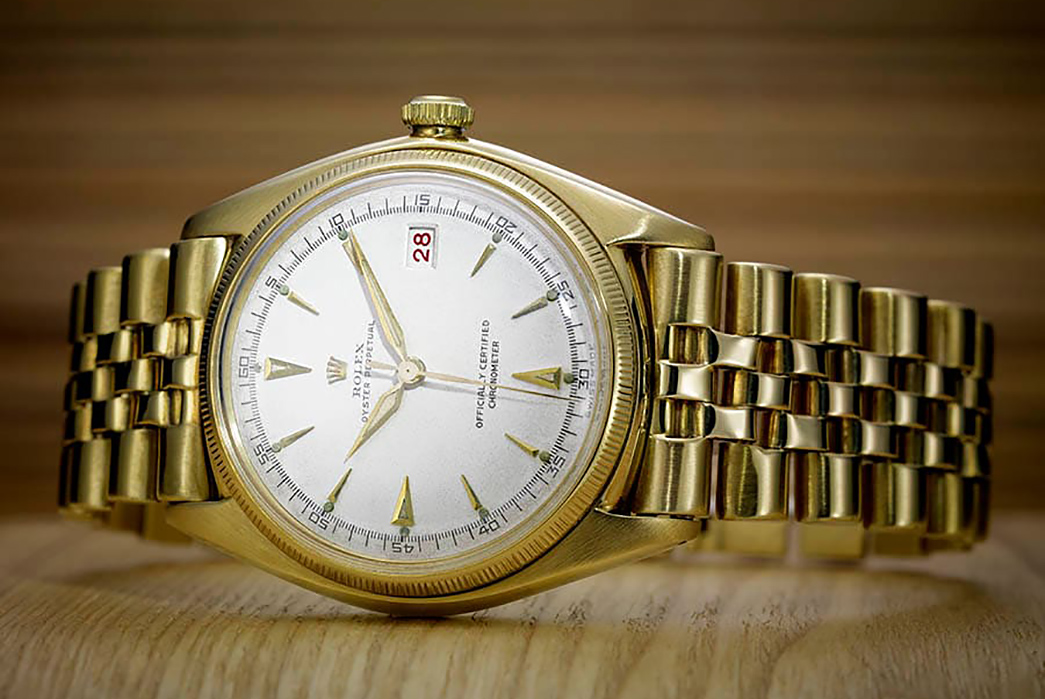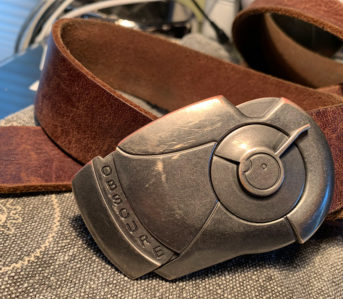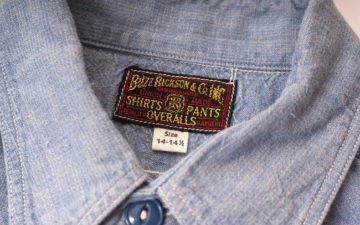To many, Rolex is a by-word for elitism and a luxury that few can stomach or afford, but the brand is far more than that. Almost a Levi’s of the watch world, Rolex was a purpose-driven innovator that has developed much of the watch technology we now take for granted. Just as Levi’s didn’t invent blue jeans (that credit goes Jacob Davis), but rather trailblazed the use of rivets to make a longer-lasting product, Rolex responded to real-world challenges and created tech that now has become the industry standard. They didn’t invent the wheel, but they sure as hell make one of the best wheels around.
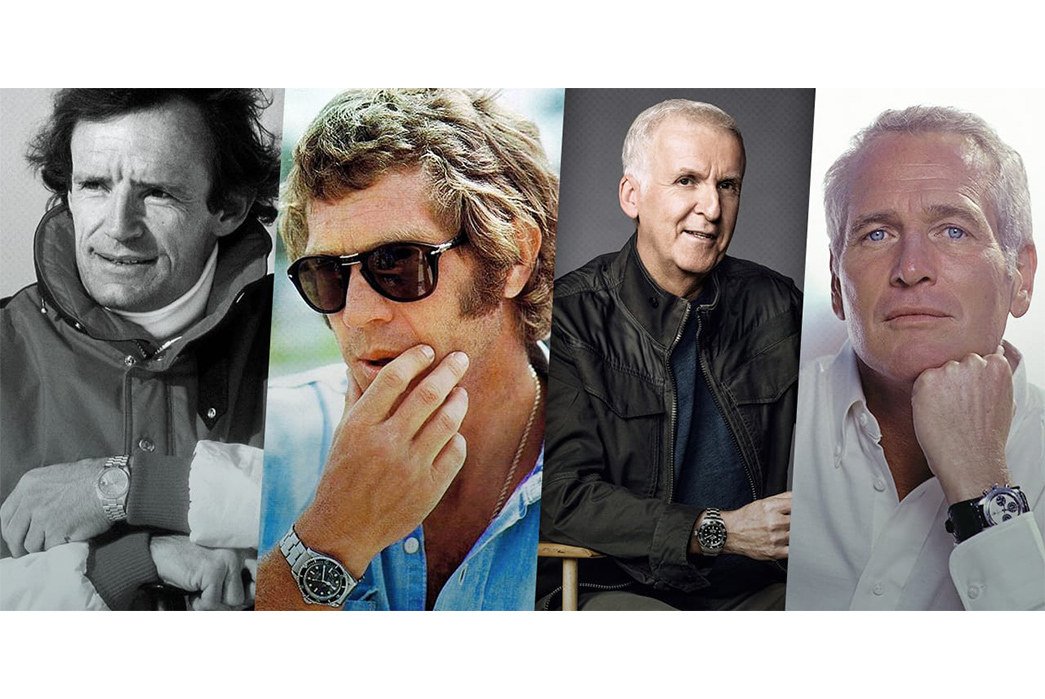
Image via Beckertime.
To an untrained eye, Rolex can seem all about the flash and the brand-name, but each of their iconic watches was a trail-blazer in its own right, designed to perform a specialized task in an ever-changing world. Join us for the history of the world’s most famous watch brand and get ready to start saving for your very own.
Early History
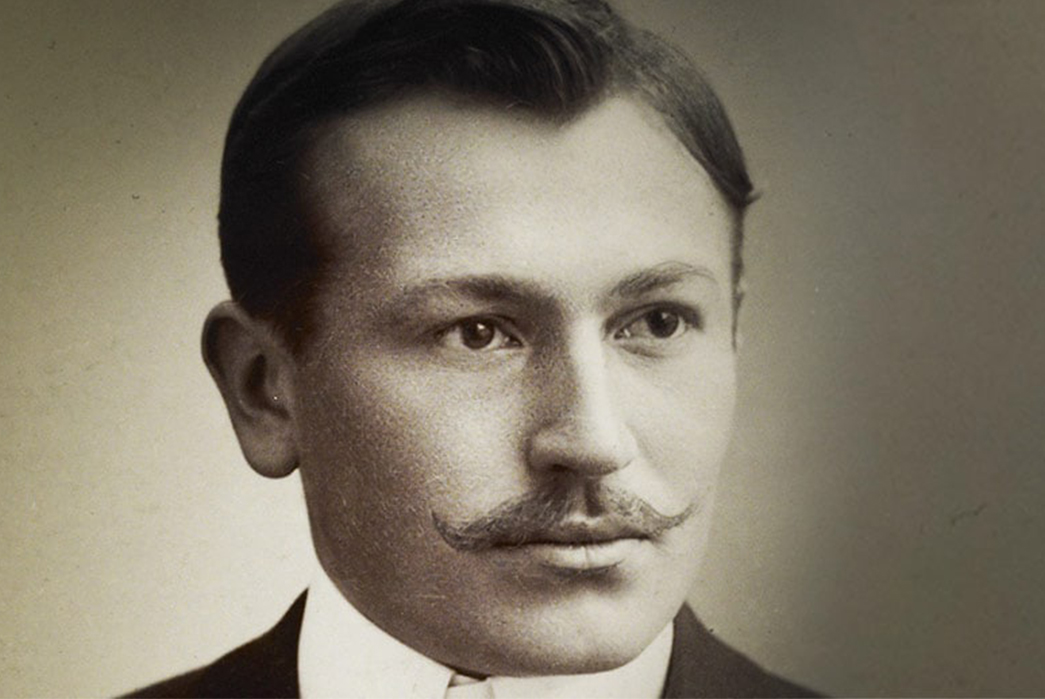
Hans Wilsdorf. Image via Rolex.
Rolex’s history begins in 1905, under the name Wilsdorf & Davis. Founded by Alfred Davis and Hans Wilsdorf, the two men set up shop in London, where they imported extremely accurate Swiss movements into the country and placed them in British-made cases. Three years later, Davis dreamed up the name “Rolex” after a lengthy brainstorming process. He wanted a name that could be pronounced in any language, which was becoming increasingly important, now that he was crossing language barriers by opening an office in Switzerland.
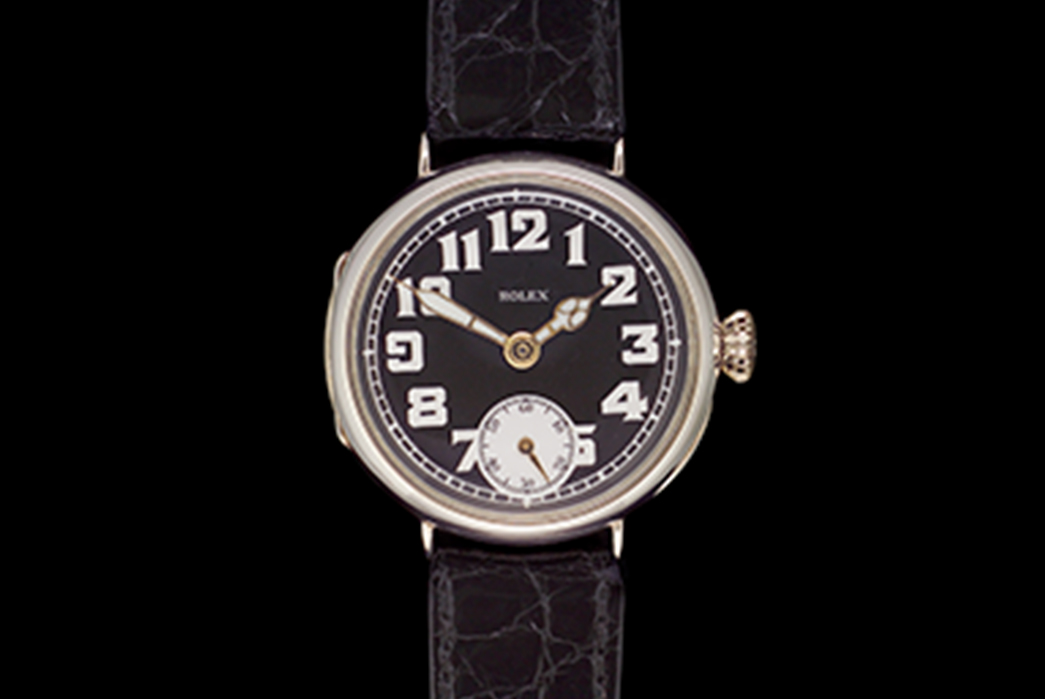
Early Rolex. Image via Vintagewatchcompany.
Though men’s wristwatches didn’t hit the mainstream until after World War I, combat experiences in the early 1900s proved that pocket watches were becoming too clunky and inconvenient for the trials of modern life and warfare, but Rolex was ahead of the curve, already deeply immersed in the world of wristwatches as early as 1910. It proved a great challenge to shrink the technology in larger pocket watches down to size, but Rolex’s efforts didn’t go unrecognized; in 1910 the company received the Swiss Certificate of Chronometric Precision and then in 1914, the Kew Observatory in Britain granted them an “A” grade in their precision tests, a score previously reserved for super-accurate naval chronometers. As World War I began in earnest, all watch brands began to affix their smallest pocket watch models to straps and sent them to active duty servicemen, but none were so accurate as those from Rolex.
Rolex’s Innovations

Rolex Geneva. Image via Rolex.
In 1915, Davis & Wilsdorf renamed themselves “Rolex Watch Co.” after their most famous and accurate product and in 1919 they moved their operation to Geneva to dodge exorbitant import duties on the high-quality materials they needed for their product.
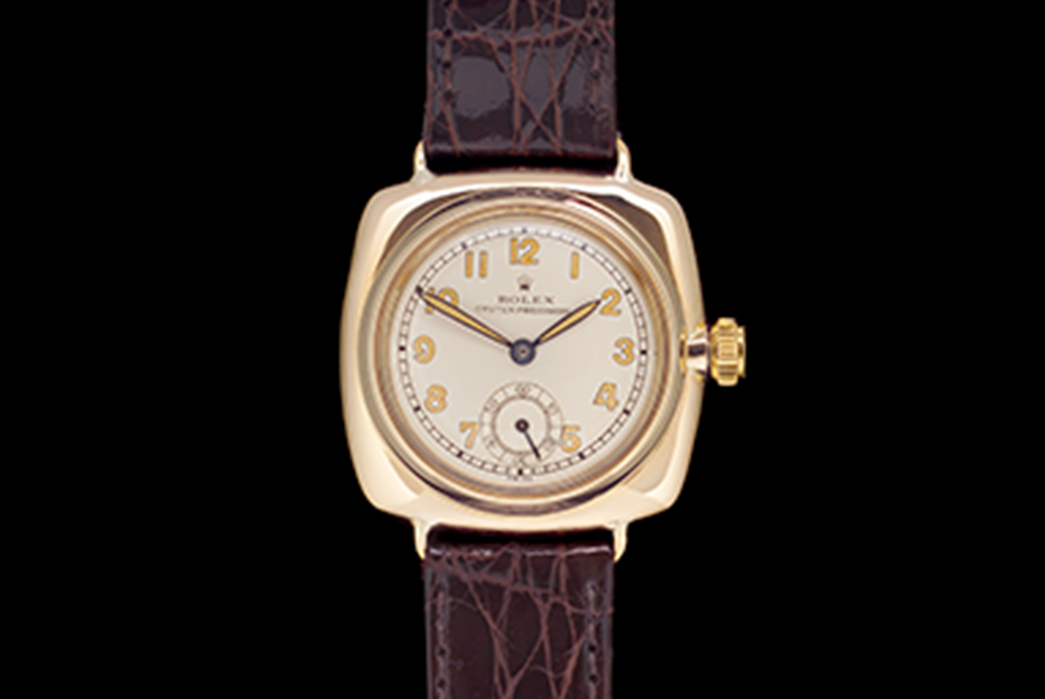
The world’s first waterproof watch: the Rolex Oyster. Image via vintagewatchcompany
Now internationally recognized for the accuracy of their Swiss-made movements, Rolex needed to address their (and all) watches’ Achilles heel: the winding stem. These stems were the weak link in an otherwise high-quality product that could leak water and dust, thereby destroying the delicate mechanisms within. All of Rolex’s certificates of Chronometric Precision wouldn’t be worth a darn if you could destroy the fine-tuned machine just by washing your hands. Wilsdorf managed to obtain a new patent for a waterproof winding stem and crown, which became the Rolex Oyster, one of the world’s first waterproof watches.
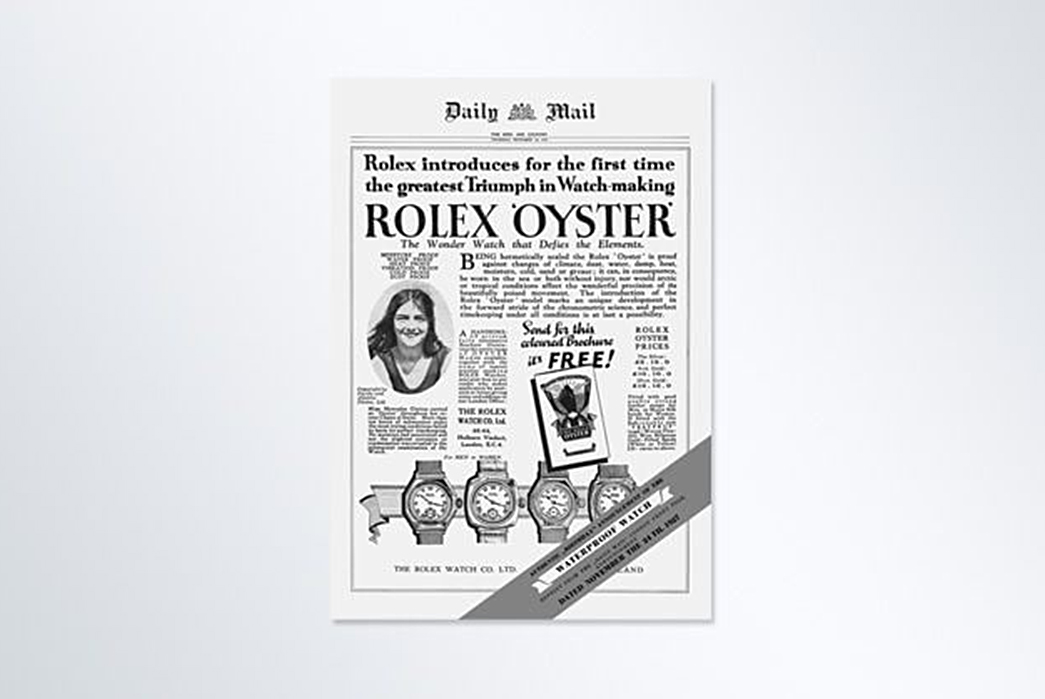
Image via Rolex.
It was hard for the public to believe that the new Rolex was actually waterproof, so Rolex retailers began to display the watches submerged in fish tanks and even gave one to Mercedes Gleitz, the first woman to swim the English Channel, whose watch was still working perfectly when she completed the ten-hour endeavor.
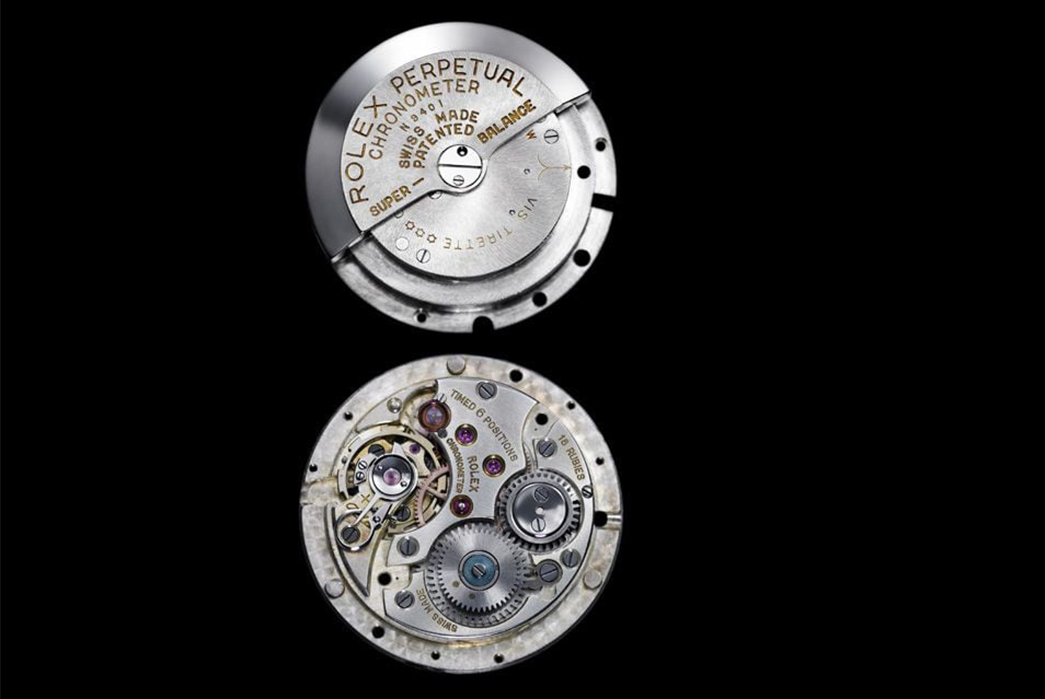
The Perpetual Rotor. Image via Rolex.
The brand’s next innovation came in 1932 with the invention of the Perpetual Rotor, the piece that now forms the backbone of all automatic watches. Though it appears other watch companies had or were in the midst of making their own self-winding motions, Rolex was certainly one of the first. Now you no longer had to wind your watch every day to keep it running, simply by moving around, one would keep the watch in running order. Now Rolexes had the words “Oyster Perpetual” emblazoned on their dials, signs that their unique watches were both waterproof and would last as long as the wearer stayed mobile. Rolex began to hit its stride in 1945, as the first of its iconic models began to be released.
Rolex Datejust
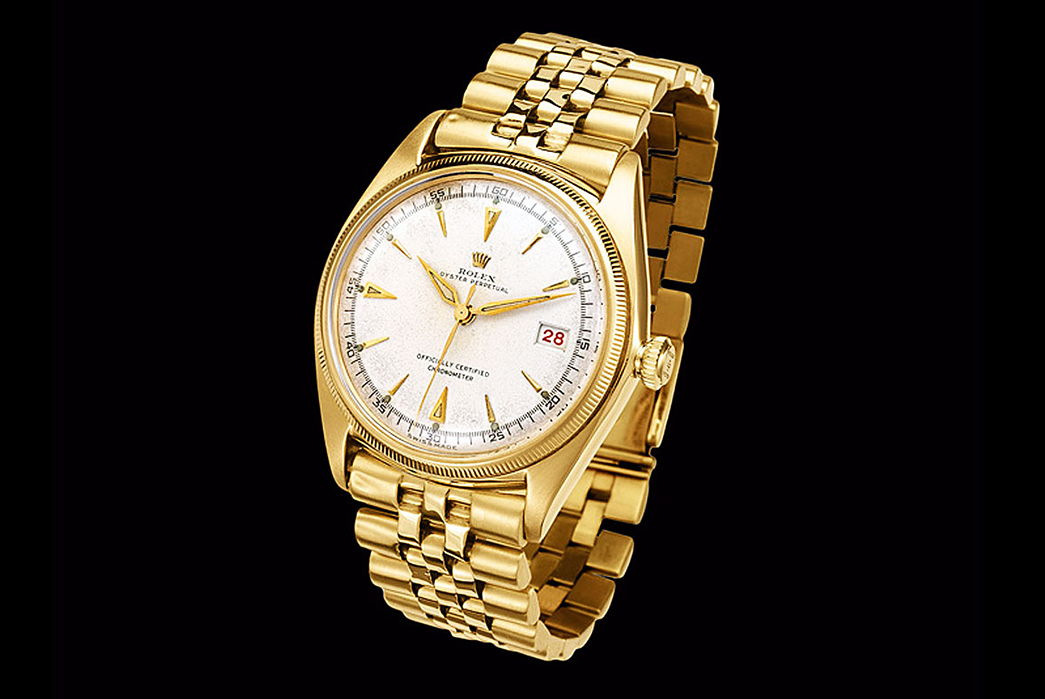
Rolex Datejust. Image via Beckertime.
The Rolex Datejust premiered in 1945 and the brand claims it was the world’s first automatic watch with a date feature. Whether or not that’s true, the Datejust would become probably the most iconic. Released on the Jubilee bracelet, now an iconic style in its own right, the Datejust’s fluted bezel and unique styling made it an instant hit. Worn by all kinds of amazing people, some of the Datejust’s most famous wearers include Dwight D. Eisenhower, Francis Chichester, and zillions of cool fashion dudes. Dressy, but tough, this watch is now the backbone of the Oyster Perpetual lineup and set the stage for the release of Rolex’s most famous pieces: their tool watches.
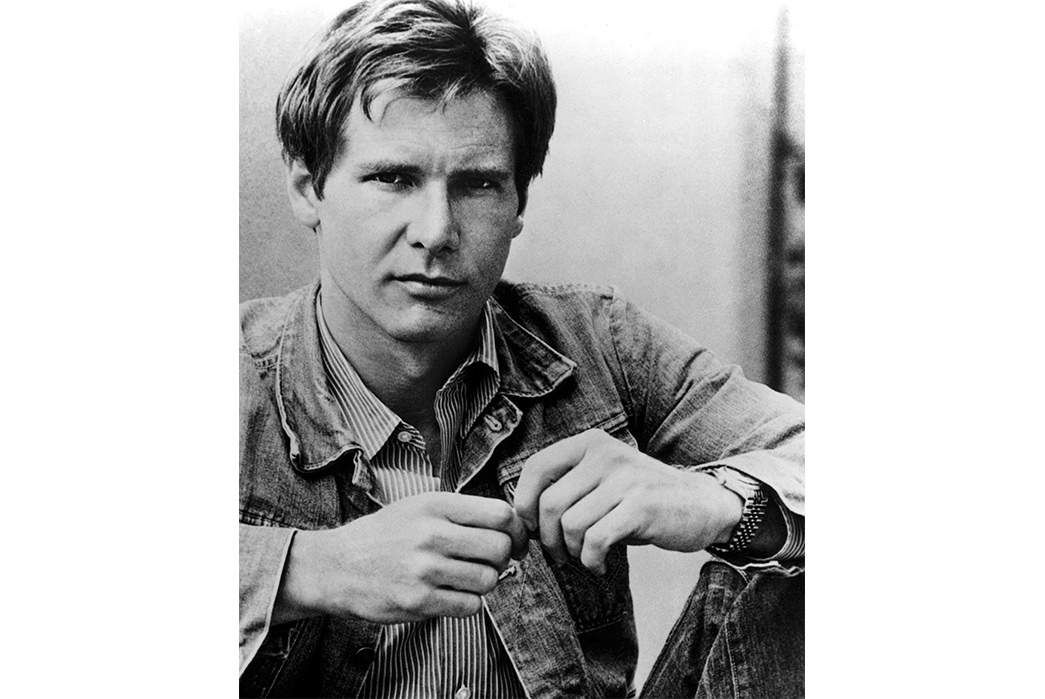
Harrison Ford with Datejust. Image via Jake’s Rolex World.
Rolex Explorer
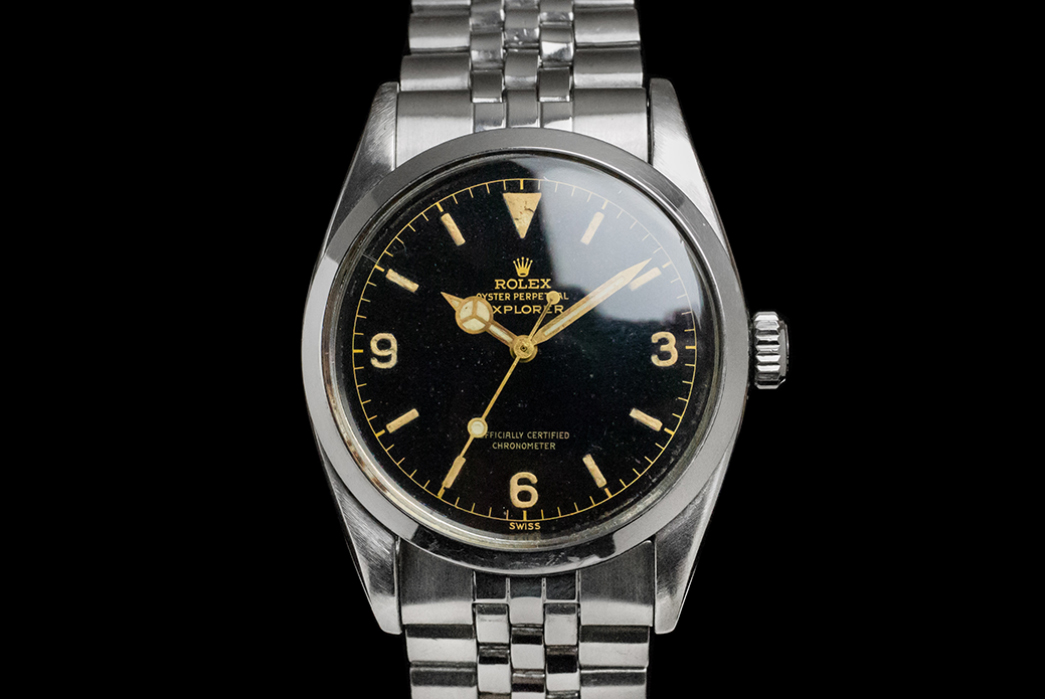
Rolex Explorer. Via Amsterdam Vintage Watches.
It might seem melodramatic to name your product “Explorer,” except for the fact that this watch was made for one of the most daring adventures of the postwar era. This watch burst onto the scene in 1953, when its experimental prototype reached the summit of Everest on the wrists of Sir Edmund Hillary and his sherpa, Tenzing Norgay. The result was a watch that could withstand environmental extremes and set the brand on a different path. Though the watches would heretofore retain their aristocratic, high-end styling, the models to come would be mostly of the tough-as-nails variety. To this day, the Explorer sets the bar for minimalist tool watches.

Brad Pitt in a later-edition Explorer. Image via Pinterest
Rolex Submariner
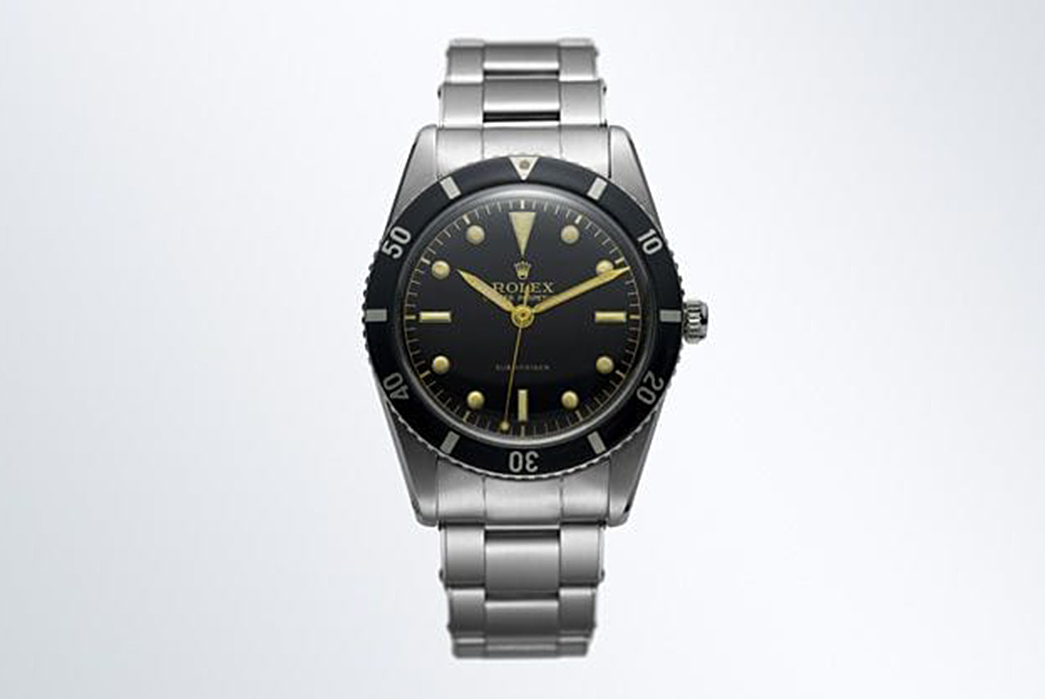
Image via Rolex.
For many, this is the definitive Rolex. Also released in 1953, this would be the first watch capable of diving 100 meters and retaining its waterproofness. Its rotating bezel allowed divers to track their immersion time and its next-to-perfect styling was a huge hit with people in and out of the diving community. The Sub has evolved greatly over since its creation, and it would be an article in and of itself to track the minute differences from year to year, but there’s something just so perfect about the earliest models. Clean and small, the early Subs were not the enormous works of flashiness that some modern versions can be. Some of these innovations included the added date function, as well as the now-iconic Cyclops date aperture, that zooms in on the date.
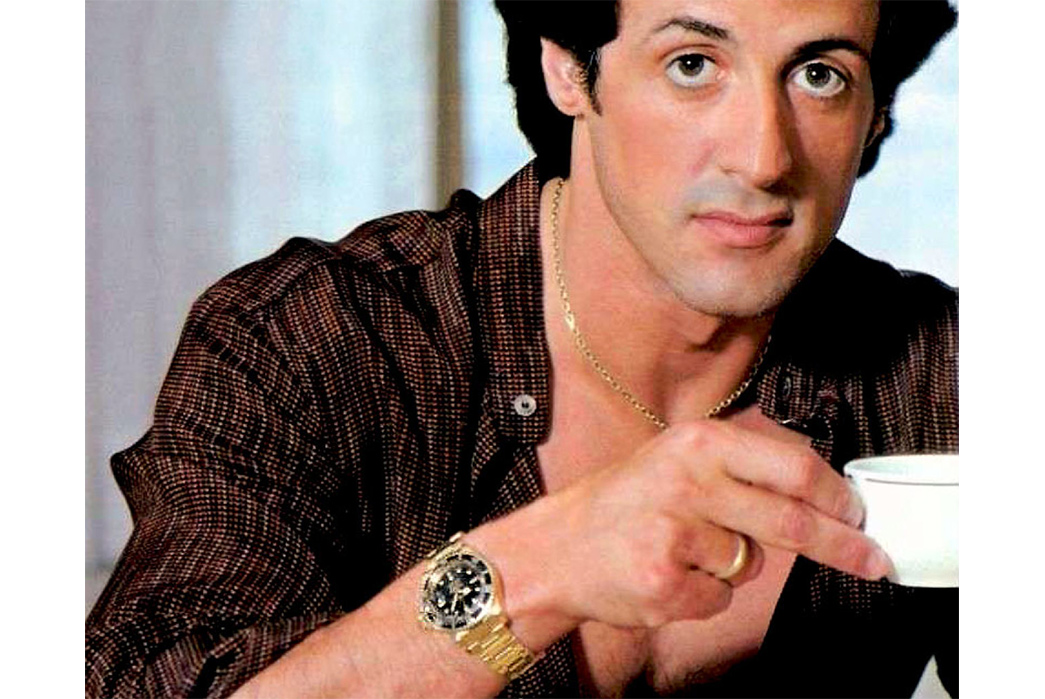
Stallone with yellow gold sub. Image via Rolex Daytona Replica.
Rolex GMT
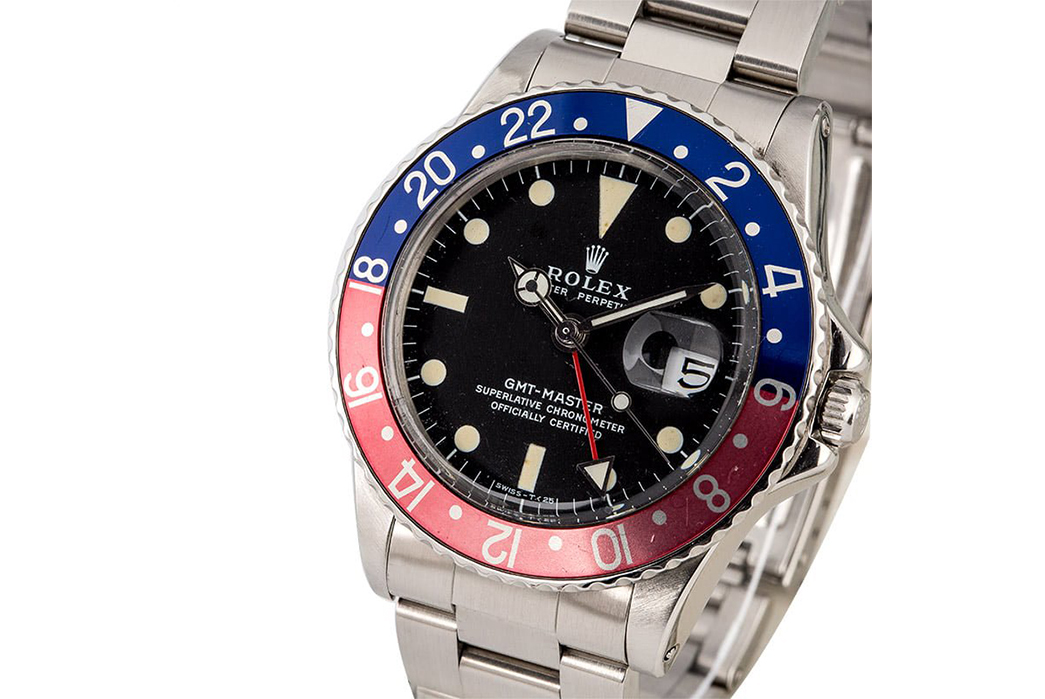
Rolex GMT. Image via Bob’s Watches.
Continuing to produce watches for extremely specific purposes, Rolex developed their iconic GMT-Master after they were approached by executives of Pan-Am airlines who wanted a watch that could track 24-hour time. Rolex did them one better. The red and blue bezel isn’t just for show, it tracks the day and night hours and the extra GMT hand with the arrow on the end, can be set to track time in a secondary timezone, which would be a huge boon to pilots and makes this watch a favorite with frequent travelers, who can set that hand to keep track of loved ones back home.
This watch hit the scene in 1955, just as air travel was really taking off and intercontinental travel became more common and proved yet again how versatile the brand could be as they kept up with the changing times. Despite its position as a later model, the GMT is in many ways the quintessential Rolex, taking advantage of all the brand’s landmark inventions and throwing them into one legendary piece of horological craftsmanship. For many, this is the end-all, be-all.
Your First Rolex
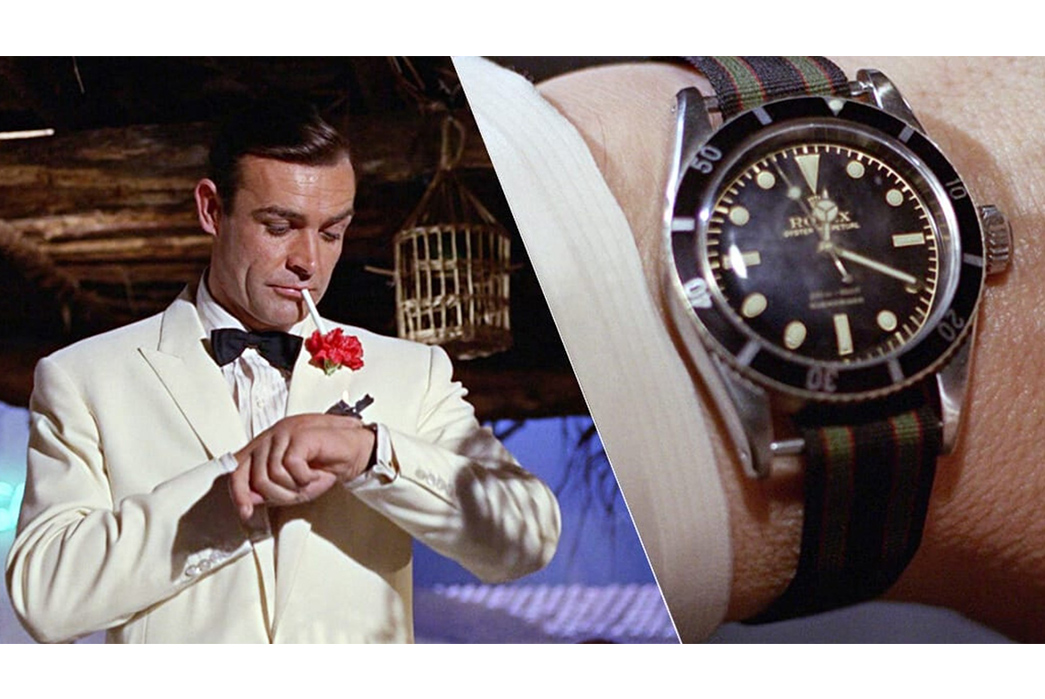
Image via Chrono24.
Rolex gets a bad rap, mostly because its name has taken on a meaning far more expansive than its range of watches. But for every person who buys a Rolex simply for the flex, there are hundreds of well-meaning fans saving up to step up their collection. An interest in Rolex makes a lot of sense if you’re also a denimhead, whose fastidiousness and love of history translate well to memorizing the minutiae of the ever-changing Rolex line. Better still, a knowledge of watches can open untold doors. Like knowing a bit about golf, a well-timed compliment on someone’s shiny Rolex can open up a conversation just as variegated and intriguing as any that we might have about the various Japanese denim brands we so adore.
Watches are a language unto themselves and in many ways, that language is spoken in a Rolex-heavy dialect. To know the Daytona from the Day-Date may seem quibbling, but perhaps so is knowing the difference between the Levi’s 501 and 505. Aspirationally priced, the Rolex is the type of grail that we all dream of, but far from a vapid, materialist impulse-buy, your first Rolex will be the result of your passion for history and your discerning eye. So get to researching and more importantly, get to saving.

